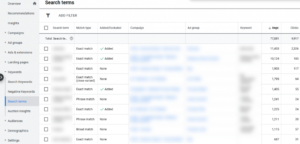What’s in this article:
- Key tools that can help you identify a decrease in customer activity and how you can use them to prevent customers from churning
From not being satisfied with products to problems with customer service, customers have several reasons for leaving brands. However, before ending their relationship with brands, some customers first reduce their engagement by either making fewer purchases or ignoring emails.
Since decreased customer activity is a pretty good indication of possible churn, it’s important to have the right tools to identify early signs of disengagement before your customers switch to other brands.
Below are four tools that can help you identify a decrease in customer activity and how you can use them to prevent customers from churning.
1. Cohort Analysis Tools
How shoppers engage with your mobile app can indicate their level of engagement with your brand. For instance, shoppers deleting your mobile app could be a sign that they’re going to shop less with your brand.
A tool that can help you identify and analyze changes in the way shoppers engage with your app is called cohort analysis. With a cohort analysis tool, you can analyze a group of app users with common characteristics over a specified time period and discover engagement trends. Below are three things to note when using cohort analysis.
Determine Your Questions: The point of cohort analysis is to have actionable information. Determine the question you want to answer and narrow down the metrics that will help you answer this question. Metrics could be knowing when a user stops engaging with your app or what their average total transaction is.
Uncover Friction Points: Uncover friction points in your app with acquisition cohorts. Group app users by the day, week, or month that they first downloaded your app or purchased a product to determine how long people are using your app and when in the customer lifecycle they tend to drop off.
Understand Behaviors: Use behavioral cohorts to track how users engage with your app over their lifecycle and identify behaviors that seem to affect engagement. Create cohorts based on your ideal user journey and group users by the behaviors they have (or haven’t) taken in your app within a given time period. For example, users who add an item to their cart within 24 hours.
Become the best CRMer you can:
CRM Hack: Monitoring the User’s Heartbeat
What Does It Mean to Treat a Customer’s Email With Respect?
To Lock or Not to Lock Customers (into CRM Journeys)
What the Efforts to Promote Responsible Gaming Look Like Form the Inside
2. Email Analytics Tools
How consumers interact with your emails can tell you if they’re still into you or not. For instance, some customers simply delete or ignore emails that they are no longer interested in rather than unsubscribing. One tool you already have in your arsenal to detect a decrease in email engagement is your email marketing platform. Here are a few things to note when identifying decreased activity via email engagement.
Define Inactive Subscribers: Define inactive subscribers to spot subscribers who haven’t engaged with your emails in a while. Your definition of inactivity should depend on your sending frequency, the type of product that you promote, and your purchase lifecycles.
Segment Inactive Subscribers: Split inactive customers into groups to identify those worth re-engaging and send them targeted emails. Segment inactivity based on their click, open or purchase rate over a given period of time.
Have a Re-Engagement Plan: Send inactive subscribers re-engagement emails to win back their interest. Your email should explain who you are, including a reminder for recipients about how you got their email address and a special offer to incentivize them to stay. Use emotive subject lines, include a clear CTA in your win-back campaign, and carry out A/B tests to find the best approach to awaken inactive subscribers.
3. Net Promoter Score Survey
Unhappy customers are likely to reduce their total amount of purchases from your business over time and warn prospective customers to avoid your brand. To identify this set of customers known as detractors and fix your relationship with them before they churn, use a Net Promoter Score Survey.
This survey asks customers how likely they are to recommend your brand from a scale of 0 (not at all likely) to 10 (extremely likely). Use these tips to identify detractors and possibly turn them to promoters of your brand.
Identify Detractors: Customers who select a rating between 0 to 6 are detractors who are unlikely to buy from you again. Segment detractors into categories to enable you to spot those who are worth saving or not. For instance, a consumer who is disappointed in your brand but still interested in your product might be worth keeping instead of a customer who has decided to cancel their subscription.
Ask Follow-Up Questions: Ask open-ended secondary questions to find out why detractors are unhappy with your brand. A good question could be, “What was missing or disappointing in your experience with us?” Consider using text analysis tools to go through open text feedback quickly.
Close The Loop: Reach out to detractors in person or on a phone call 24 hours after their response has been received. Let them know their feedback has been heard, and tell them what you’ll do to resolve their complaint. To ensure issues with detractors are resolved quickly, give customer-facing employees autonomy to make decisions themselves.
4. Customer Behavior Analytics Platform
Customer behavior analytics enables you to understand your customers better and identify changes in their purchase behavior to launch retention programs. Below are some things to keep in mind when using customer behavior analytics platforms.
Data: Compile data from all customer touchpoints and sources, clean the data, and organize it in meaningful ways for your analysis. Ensure the customer behavior analytics platform you use can track data within a single view and interpret mass amounts of structured and unstructured data.
Identify Behaviors: Examine behavioral data to identify patterns that indicate which customers are likely to leave and create personalized offers to increase their existing purchase rate. Don’t have a data science team? Choose a platform that has out-of-the box models to help you identify customers who are likely churn.
Leverage Advanced Analytics: The platform you choose should have advanced analytics features to help you spot early signals of decreased customer activity. Features to look out for include analysis to identify key purchase patterns and recommendations to identify ways to increase purchases.
The Final Word
In a world where consumers are not keen on having permanent relationships with brands, having the right tools to identify a decrease in activity is important. Make sure the tools you choose can be integrated with your existing software and have the expertise to use the tools you select. Lastly, don’t leave the insight you uncover to gather dust. Share them with stakeholders and develop retention strategies to help you build stronger relationships with your customers.
The post Are You Using the Right Tools to Identify A Decrease in Customer Inactivity? appeared first on Post Funnel.




